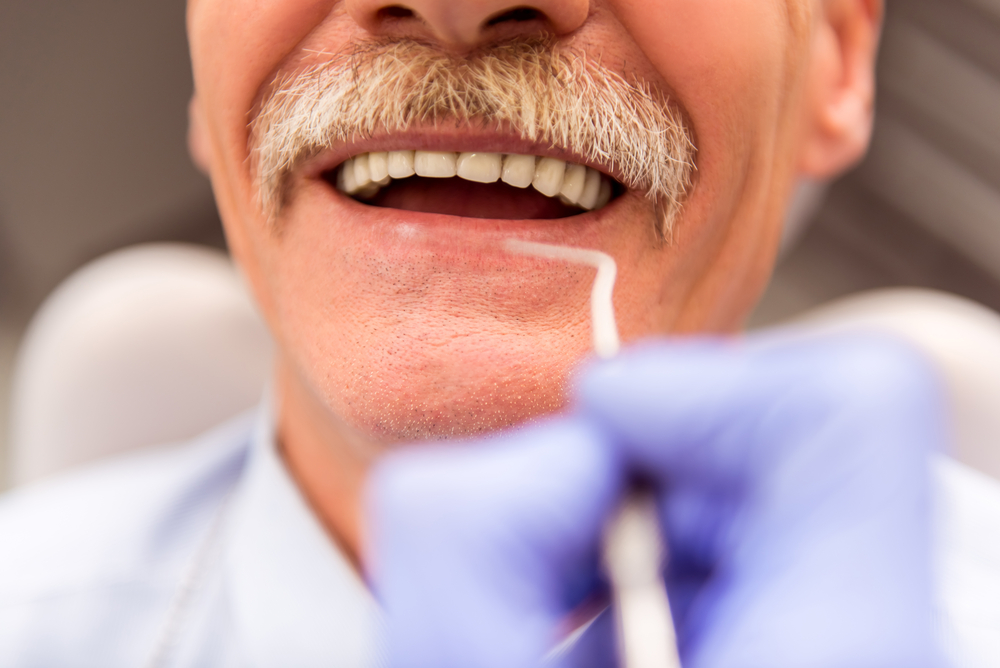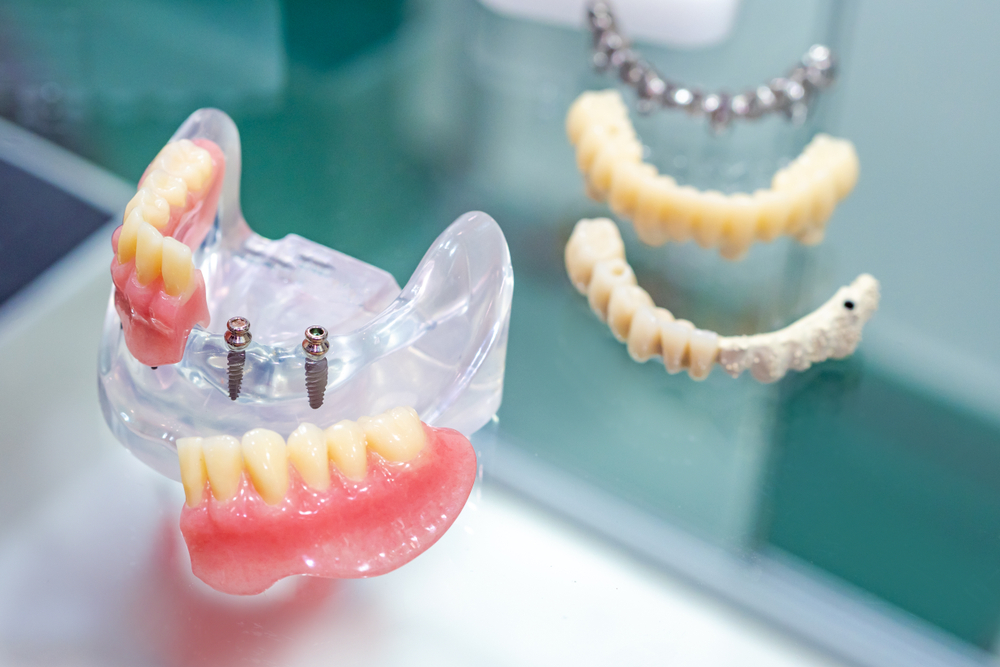Subperiosteal Implants & Why We Recommend Other Options
Before advanced bone grafting techniques allowed patients with weaker jawbones to receive endosteal dental implants, subperiosteal dental implants may have been offered. However, subperiosteal dental implants are rarely offered today and are usually reserved as a last resort. In the helpful guide below, Turlock, CA, implant dentist, Dr. Jim Eggleston, of Eggleston Dental Care explains more about these older dental implant solutions, and why we recommend more modern options.
While we don’t offer subperiosteal dental implants, we do offer more advanced implant techniques that are better suited to your oral health needs. Learn more by dialing 209-226-4963.
What Are Subperiosteal Dental Implants?
Subperiosteal dental implants are a tooth replacement for individuals with insufficient jawbone density for traditional implants. Unlike endosteal implants that are embedded in the jawbone, subperiosteal dental implants are designed to rest on top of the jawbone, with the metal implant posts protruding through the gum to support the prosthetic teeth.
Benefits of Subperiosteal Dental Implants
In the past, subperiosteal implants may have been prescribed for reasons such as the following:
Minimally Invasive Surgery
Subperiosteal dental implants involve a less invasive surgical procedure compared to traditional implants, minimizing trauma to the patient’s jawbone and surrounding tissues. This can lead to quicker recovery times and reduced discomfort for patients.
Avoidance of Complex Bone Grafting
Unlike endosteal implants that require adequate bone volume for placement, subperiosteal dental implants can often be placed without the need for complex bone grafting procedures. This makes them a more viable option for individuals with insufficient bone density, providing an alternative solution for tooth replacement.
Restoration of Full Chewing Function
Subperiosteal dental implants restore chewing function and a natural bite, allowing patients to enjoy a wide range of foods without restrictions. These implants offer stability and durability comparable to natural teeth.
Improvement in Speech and Facial Aesthetics
With subperiosteal dental implants, patients can experience improved speech clarity and facial aesthetics. By replacing missing teeth and supporting facial structures, these implants contribute to a more harmonious facial appearance and enhanced overall confidence.
Boost in Self-Confidence and Quality of Life
By restoring a complete and functional smile, subperiosteal dental implants can significantly boost self-confidence and overall quality of life. Patients regain the ability to eat, speak, and smile with ease, leading to a greater sense of well-being and satisfaction with their oral health.
Disadvantages of Subperiosteal Dental Implants
While subperiosteal dental implants offer an alternative path to implant placement for patients with weaker jawbones, using them has largely fallen out of practice. Some of the disadvantages of subperiosteal implants include the following:
- Structural Complexity: Subperiosteal dental implants are complex structures made of a metal framework that must be custom-fabricated to precisely fit the patient’s jawbone. This process is challenging and time-consuming, requiring skilled technicians and multiple clinical visits for impressions, fittings, and adjustments.
- Risk of Bone Resorption: Subperiosteal dental implants are not inserted into the jawbone and thus, can’t stimulate it. Over time, this can lead to bone resorption (loss of bone mass) around the implant. This phenomenon can compromise the implant’s stability and increase the risk of implant failure or mobility.
- Potential for Soft Tissue Irritation: The metal framework of the subperiosteal implant is exposed to the oral cavity, which can potentially irritate the surrounding soft tissues (gums, cheeks, and tongue). This can lead to chronic inflammation, discomfort, and an increased risk of infection.
- Limited Retention: Subperiosteal implants typically have lower retention compared to endosseous (bone-level) implants. This is because they rely on the periosteum and soft tissue for stability rather than being directly integrated into the jawbone.
- Aesthetic Concerns: The protruding nature of subperiosteal implants can create an unnatural appearance, especially in cases where significant bone loss has occurred. This can compromise the aesthetic outcome, particularly in visible areas of the mouth.
- Higher Cost: Due to the complexity of the fabrication process and the specialized components involved, subperiosteal implants are generally more expensive than other implant types.
- Limited Longevity: Subperiosteal implants have a higher risk of failure over time compared to endosseous implants, which can lead to replacement or alternative treatment options.
Alternatives to Subperiosteal Implants
Endosteal Implants
Endosseous (Endosteal) implants are the most common and widely accepted alternative to subperiosteal implants. These implants are surgically placed directly into the jawbone, where they integrate with the surrounding bone through a process called osseointegration.
Endosseous implants provide artificial teeth with excellent stability and a strong foundation for dental restorations, such as crowns, bridges, or dentures. They are suitable for patients with sufficient bone density and volume in the jawbone and have a high success rate, making them a long-lasting and predictable solution.
Zygomatic Implants
Zygomatic implants are a specialized type of dental implant designed for patients with severe bone loss in the upper jaw (maxilla). Instead of being placed in the jawbone, zygomatic implants are anchored in the zygomatic (cheekbone) area, which typically has denser bone. These implants are longer than traditional implants, extending through the sinus cavity and engaging the zygomatic bone.
All-on-4
The All-On-4 technique is a specific approach that utilizes four implants (two straight and two angled) to support a full-arch prosthesis in either the upper or lower jaw. By strategically placing the implants at specific angles, the All-On-4 method maximizes the available bone and distributes the forces more evenly.
This technique is particularly beneficial for patients with moderate to severe bone loss, as it eliminates the need for a bone grafting procedure in many cases. All-On-4 implants allow for the immediate loading of a temporary fixed prosthesis, reducing treatment time and improving the patient’s quality of life.
Mini Dental Implants
Mini dental implants (MDIs) are smaller in diameter (usually 1.8 to 3.0 mm) compared to traditional implants. They’re designed to be minimally invasive and can be placed using a relatively simple surgical procedure. MDIs are often used for stabilizing removable dentures or as temporary anchorage devices for orthodontic treatments. While they have a smaller surface area for osseointegration, MDIs can provide a cost-effective and less invasive solution for certain cases, particularly in areas with limited bone volume.
Frequently Asked Questions
How long do subperiosteal dental implants last?
Can subperiosteal implants be used for full-arch tooth replacement?
What should I do if I experience any complications with my subperiosteal implants?
Are subperiosteal implants covered by dental insurance?
Discover Dental Implants at Eggleston Dental Care!
If you live in Turlock, CA, or the surrounding areas such as Keyes, Denair, and Hatch, don’t let missing teeth hold you back any longer. Take the first step towards restoring your smile and confidence by contacting Eggleston Dental Care. Call us today at 209-226-4963 to schedule your consultation and learn more about the life-changing benefits of advanced dental implant options. Regain your ability to smile, eat, and speak with ease, and experience the joy of a beautiful, functional smile once again.

